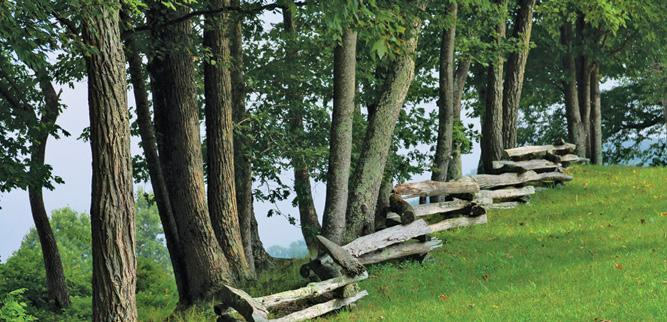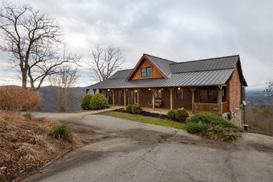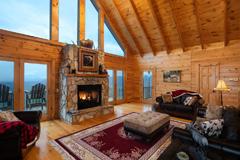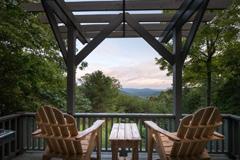
5 minute read
Fishing with Andrew Corpening
Location, Location, Location
By Andrew Corpening
As the old joke points out, location is a main concern when buying or selling real estate. A good neighborhood, a quiet street, and proximity to schools and/or work are all concerns when making decisions about property. Even though trout are not looking for a quiet street, location is a major concern for successful summer time trout fishing.
As the area streams and rivers warm up, the water temperature can get above the trout’s comfort level. This happens because warm water holds less oxygen than cold water. The trout are still there but less active. They still feed but are a little more difficult to catch. To be successful this time of year, you need to know the location where the trout are holding.
The most obvious place to look for summer trout is in the headwaters. The trout may move upstream to the small water where the creek has had less time to warm up. When fishing these smaller streams and creeks it is very important to keep a low profile. Since you are going to be closer to the fish and making shorter casts, the trout are more likely to see you. It is not that they fear you but it is your movement that spooks them. Since nearly all of their predators come from above, they seek cover when seeing movement above the water.
The one positive thing about fishing the small streams is that the trout are less selective about what they eat. Since small streams hold fewer food sources, the trout usually try anything that looks like food. Fly selection, or “matching the hatch,” becomes less important on the smaller streams.
If small stream fishing is not your cup of tea, look for places on the larger streams that provide cooler or more oxygenated water. Trout will hold in a deep pool where the water is cooler on the bottom. When fishing this deep water use a long leader with a weighted nymph. This will get the nymph to the bottom where the trout are holding. Cast upstream of the pool to allow the nymph time to sink to the trout’s level. Adding a little weight with small split shot sinkers can also help get the fly down faster. Remember that when using a nymph, if you don’t sometimes hit the bottom with it, then it is not deep enough.
In addition to these deeper pools, look for places where the water is cascading over boulders or is stirred up by an uneven stream bottom. Water captures oxygen when it falls through the air and trout are likely to be in these locations.
There is another plus to fishing these types of locations: since the water is faster, the trout have less time to look at your offering. There is a good chance that if the fly even remotely looks like food to the trout, they will try it.
Yet another place to find summer trout is at the confluence of a small stream with a larger river. The small stream is most likely cooler and more oxygenated so the trout move to these locations.
Even though it may seem to be more difficult to catch trout this time of year, fly selection becomes easier. Aquatic insect hatches start to slow down and when a hatch occurs it is usually in the early morning or at dusk. Because of less aquatic insect activity trout turn to terrestrial insects for food. Terrestrial insects are land-based bugs that fall in the water accidentally. These include ants, beetles, inchworms, crickets, and grasshoppers.
Terrestrial flies are most effective when fished under over-hanging bushes or trees. Remember that these insects are not supposed to be in the water so they fall in when the wind dislodges them. Also, the shade from this foliage keeps the water cooler so the trout are more likely to be in these locations.
Another plus with terrestrials is that your presentation becomes less critical. Where a delicate cast is usually required when fishing dry flies, the land-based insects literally splash into the water. A little “plop” when your beetle or ant fly hits the water can sometimes entice a trout to eat it. Even though these types of flies are usually fished on the surface as dry flies, they can still be effective when they sink. This is especially true for ant flies.
One final option to catch summer trout is to fish where the water never warms up much. Tailwater rivers are perfect for this. Tailwaters are rivers below hydroelectric dams. Since the water comes off the bottom of lakes it stays at a nearly constant temperature all year. Fortunately, it is the perfect temperature for trout. High Country fly-fishers are lucky to have two such rivers nearby in Tennessee. The Watauga and South Holston rivers of Tennessee are true blue-ribbon trout fisheries with literally thousands of fish per mile.
These rivers can be a little tricky to get to and find access points. If you have a fishing buddy who can take you, you’re in luck. The only thing you need is a Tennessee fishing license. If you don’t have a friend who knows these rivers your best option is to hire a guide.
If you think like a trout and fish the locations favorable for trout you can still have successful summer fishing. Even though the water is warmer the fishing can still be hot in the right High Country locations.
FISHING

WE ARE FULLY INSURED AND PROVIDE CERTIFICATES OF INSURANCE.

PHOTO BY TODD BUSH
Hunter’s Tree Service, Inc.
Hunter’s Tree Service, Inc. has served the High Country since 1980. Our mission is to provide you with skilled tree care and outstanding customer service, while caring for one of your most valuable resources. As your complete tree specialist, we offer a range of services:
Pruning View enhancement Tree removal Stump grinding Bucket truck service Crane service Cabling Lightning protection Pre-construction consultation Disease and pest control POB 1674, Banner Elk NC 28604 / 828-733-3320 or 828-953-5094
hunterstreeserviceinc.com
NOLICHUCKY • WATAUGA NEW RIVER • WILSON CREEK



AS SEEN ON PBS NC"NC WEEKEND"






Since 1978!










